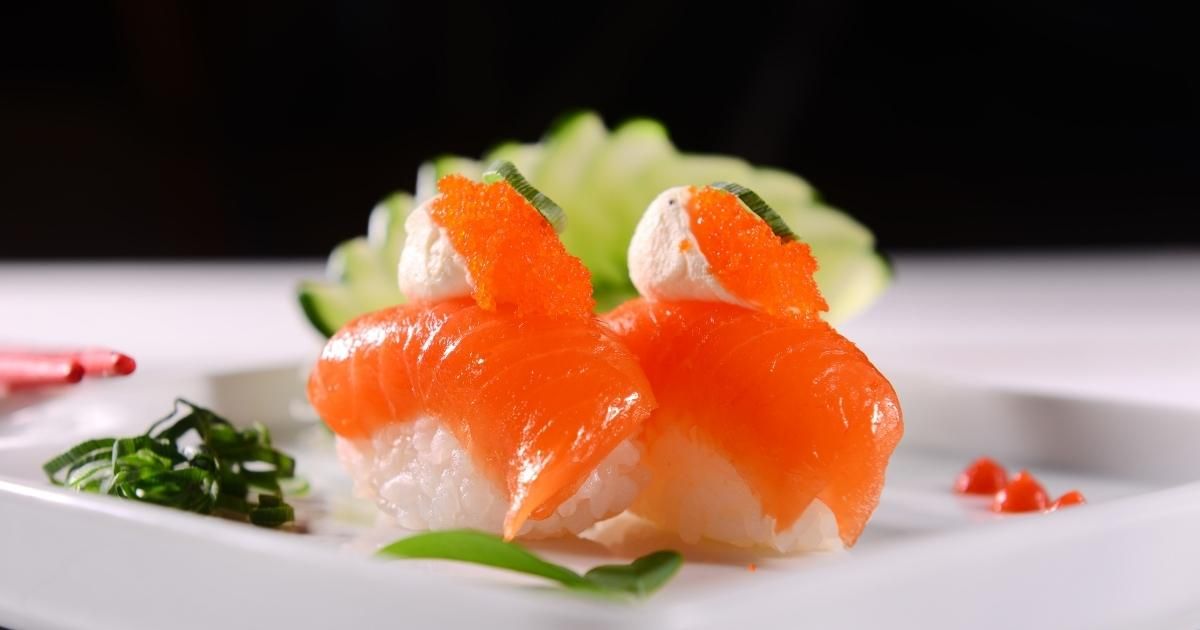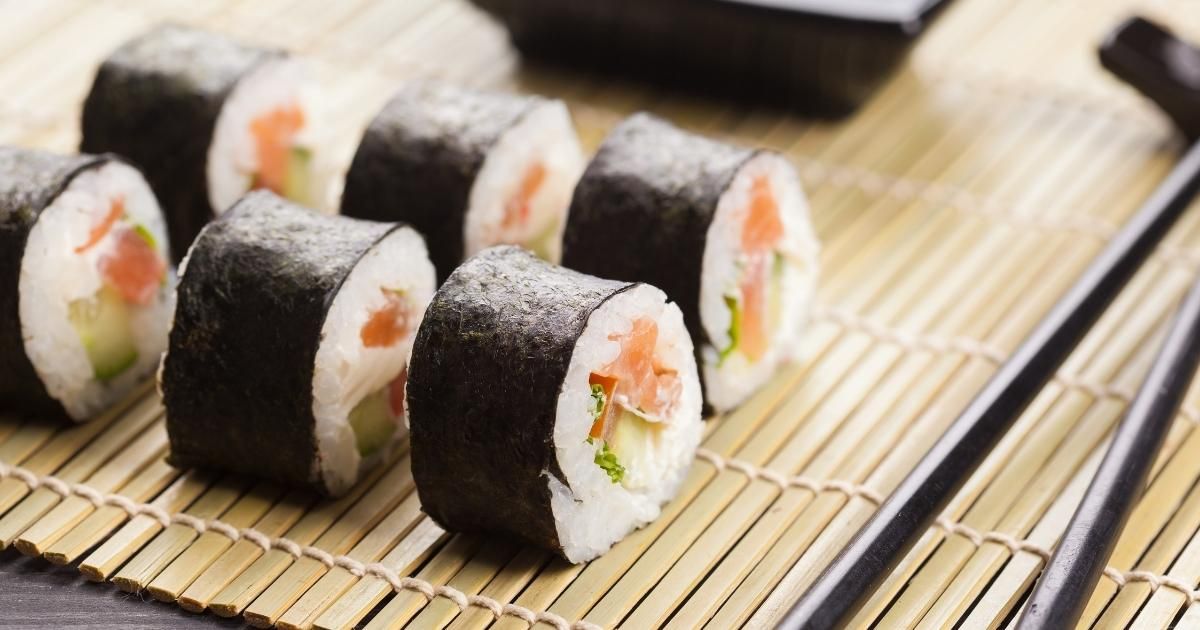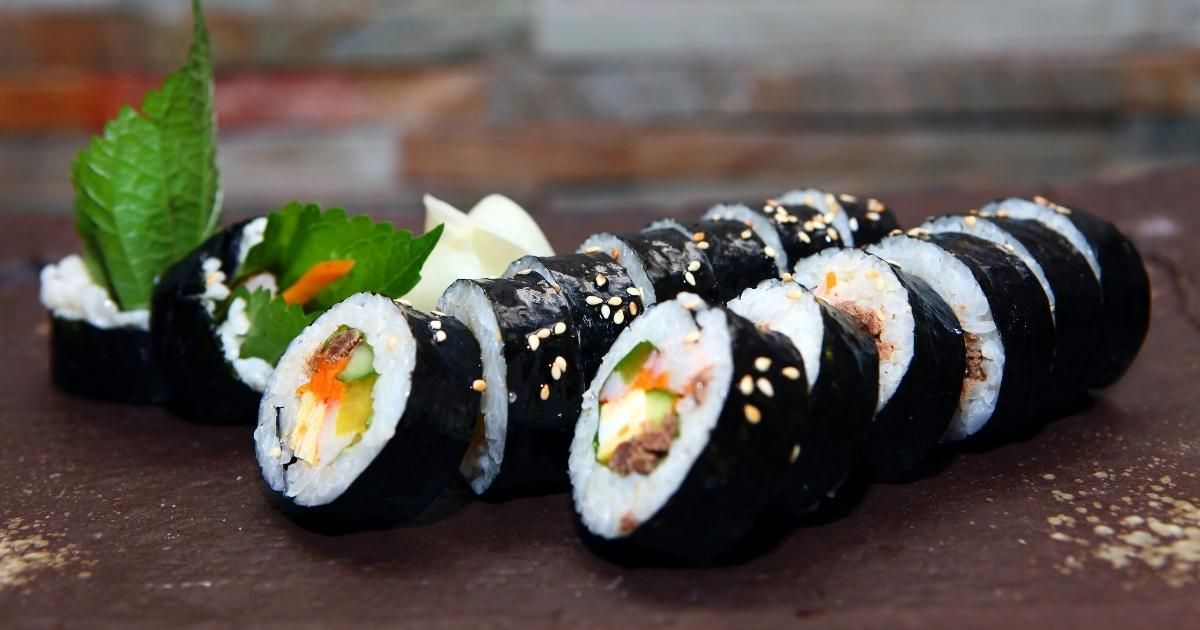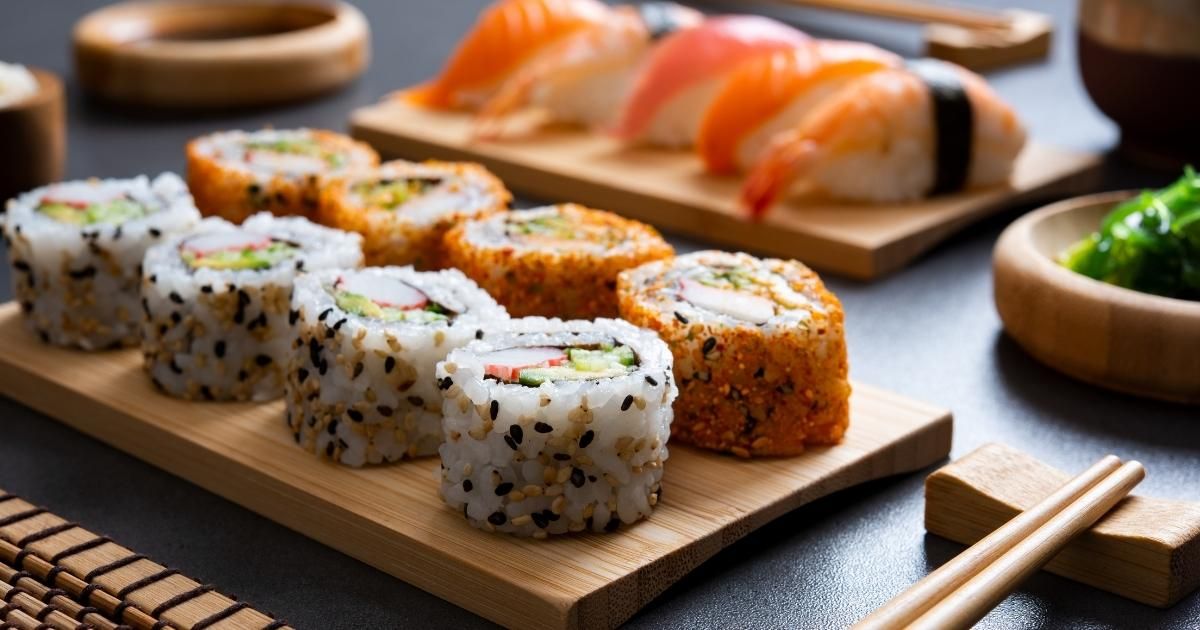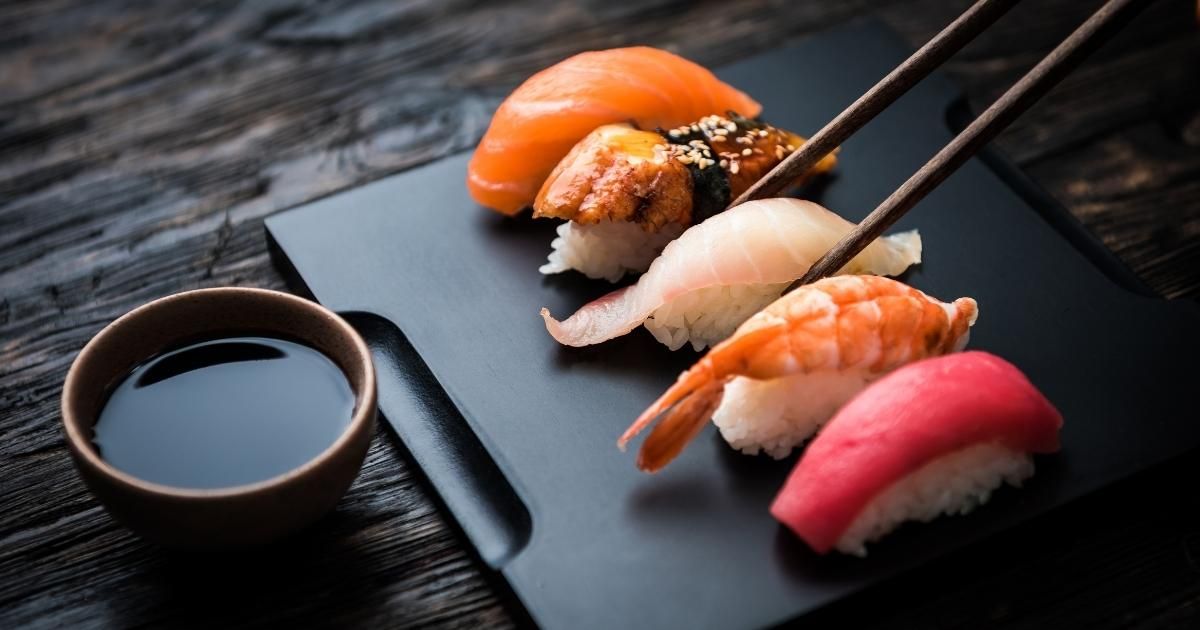5 Most Popular Types of Sushi
We all love sushi, but they all have different flavors. There are many types of sushi, and they’re all fabulous! Learn all about the different types of sushi.
Sushi is one of the most popular foods worldwide and a worthy ambassador for Japanese cuisine. The freshness, the flavor purity and the presentation! How to beat that? Here are the different types of sushi explained. We’re sure you’ll love all of them!
And although there are endless variations in sushi, all of them fall into general categories; these are the 5 significant types of sushi and getting to know them intimately pays off. Let’s get started!
What Are The Most Popular Types of Sushi?
Let’s start from the beginning. Sushi is a popular Japanese food that started as a way of preserving fresh seafood in rice for future use. Vinegar was used to protect the food from bacteria, and this way of keeping food was used for many years, going back to the 14th century. Since then, we’ve gone a long way — sushi today is precisely the opposite, fresh seafood at its finest.
Sushi is almost always a combination of steamed sticky rice seasoned with rice vinegar and seafood. Nori seaweeds play a role as well, and many other ingredients can be a part of such a tasty delicacy. The fillings, toppings and preparation methods vary widely, though, so there are many different types of sushi.
Sushi is comfort food you can find in convenience stores, but it’s also haute cuisine. You can find it in exclusive restaurants where you can expect to pay a few hundred dollars for a few sushi rolls. Sushi has become an international phenomenon and knowing the different types of sushi is a good way to enjoy the Japanese flagship dish.
1. Nigiri Sushi
The nigiri is the most straightforward style of sushi. The chefs shape bite-sized rice balls with their hands, perhaps dab it with wasabi and top it with fresh fish.
This beautiful type of sushi is all about the topping, as the rice is only the means to serve it. There are many nigiri toppings available, and they’re not all raw sushi — fish, shrimp, eel, and even egg can top a nigiri.
To enjoy this style, grab the nigiri with your hands, not your chopsticks and dip it in soy sauce with the topping side down. Enjoy it in a single bite and appreciate the nuanced flavor of the fish. Nigiris are also easy to make at home, provided you have sushi-grade fish in hand! Press the rice between your fingers and top it with your favorite ingredient.
2. Maki Sushi
This is the most distinguished type of sushi, and it’s the one you’ll most likely order at sushi restaurants. These are the typical sushi rolls, and they’re as colorful as they are tasty.
To make maki sushi, the chefs use a bamboo sushi mat, over which they place a sheet of nori seaweed, a bed of rice, and the fillings. They then roll everything up tightly and slice the roll into sushi. You can fill maki sushi with everything, from fish and shrimp to octopus and eel. Veggies are also common fillings, and more often than not, it’s the combination of flavors that makes the category so tasty.
Modern examples can be filled with cream cheese, avocado, mango and many other less-traditional ingredients, making this type of sushi fun! Everyone has a favorite maki roll.
3. Futomaki
Futomaki is an uncommon type of sushi, but a crowd-pleasing one indeed. This type of sushi is similar to maki rolls, but the rolls are much thicker, sometimes four times as large as regular maki rolls.
Futomaki sushi can have a diameter of up to 2.5 inches, which means you get more rice in every bite and more toppings. This type of sushi is often vegetarian and can contain bamboo shoots, cucumber and lotus roots.
The nori seaweed sheet, incredibly resistant and stretchy when moist, keeps all the ingredients together for a satisfying, thick slice of sushi. Futomaki rolls are not as famous outside Japan, but the world is catching up on the jumbo-sized sushi rolls. Expert sushi chefs can arrange the rolls so that they look beautiful when sliced!
4. Uramaki
This is an exciting sushi roll, and if you’re a fan of sushi, we’re pretty sure you’ve tried it before. Uramaki rolls are inside-out rolls, in which the rice layer covers the exterior and the nori seaweed is tucked inside, in contact with the fillings.
This matters because an outer sticky rice layer allows chefs to top the rolls with new and exciting ingredients, like fish roe or sesame seeds, which would otherwise slide right off a nori seaweed sheet.
If your roll has an outer sushi rice layer, that’s not a maki but an uramaki. It’s a slight difference, but it’s essential. These rolls are trendy outside Japan — the famous California rolls are an excellent example. Be careful, though; these rolls can break apart easier if not handled with care!
5. Sashimi
The last in our list of different types of sushi is sashimi. Sure, some experts don’t consider sashimi a type of sushi, as it has no rice, but many others consider it an essential member of the sushi family.
Sashimi is raw fish, sliced thick or thinly with great skill for melt-in-your-mouth bites that just taste like the sea. Just a kiss of soy sauce can make high-grade fish taste like glory!
Not every fish is suitable for sashimi, though; you need sashimi-grade fish of the highest quality, caught by handline and served insanely fresh. Every type of fish and even every part of the fish has a specific cut that enhances its flavor and texture, so serving sashimi is an art form. Only the most skilled sushi chefs with merciless Japanese knives can pull this one off.
Bonus: Temaki
As a bonus, we have a lovely type of sushi we’d love to see more often, the temaki. Sushi chefs use a nori seaweed sheet to make this cone-shaped specialty and roll it like an ice cream cone. Of course, not before filling it with rice and sushi toppings.
Along with the nigiri, you can eat the temaki with your hand, as it’s impossible to enjoy with chopsticks. And unlike other types of sushi, these are individual pieces, not meant to be shared as you’d do with maki, futomaki or uramaki rolls.
Temaki rolls are usually four inches long, and despite their size, they can fit many different toppings. You want to eat these fast, as the nori seaweed, although resistant, can fall apart with the toppings’ moisture. Most of the time, this is not a problem, though. Why? Because everyone eats these with a voracious appetite!
Spicy California Roll Sushi
California roll is a great food project that a huge wealth of people are sure to enjoy. It’s so enjoyable, in fact, that we’d even recommend using...
Sushi Rice
Making sushi rice is actually not difficult. Rice, which forms the basis of the most delicious dishes of Japanese cuisine, is one of the elements that...

